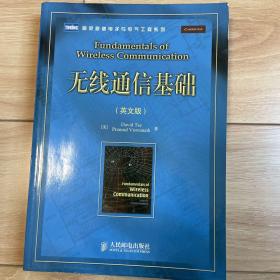
无线通信基础(英文版)
¥ 217 九五品
仅1件
北京丰台
认证卖家担保交易快速发货售后保障
作者[美]谢(Tse D) 著
出版社人民邮电出版社
出版时间2009-08
版次1
装帧平装
上书时间2022-12-02
- 店主推荐
- 最新上架
商品详情
- 品相描述:九五品
图书标准信息
- 作者 [美]谢(Tse D) 著
- 出版社 人民邮电出版社
- 出版时间 2009-08
- 版次 1
- ISBN 9787115200709
- 定价 79.00元
- 装帧 平装
- 开本 16开
- 纸张 胶版纸
- 页数 564页
- 字数 690千字
- 正文语种 英语
- 丛书 图灵原版电子与电气工程系列
- 【内容简介】
- 《无线通信基础(英文版)》介绍无线通信的基本原理,着重强调概念及其在系统中的实现之间的相互影响,涉及的主要问题有MIMO通信、空时编码、机会通信、OFDM和CDMA等,这些概念均利用无线系统的大量实例予以说明。书中还配有大量的习题和图表,可以帮助读者进一步理解材料内容。《无线通信基础(英文版)》适合作为通信工程和电子信息类相关专业高年级本科生和研究生的教材,也可供工程技术人员参考。
- 【作者简介】
-
DavidTse,博士,是无线通信领域新一代权威,现任加州大学伯克利分校电气工程与计算机科学系教授,毕业于麻省理工学院。
PramodViswanath,博士现任伊利诺伊大学厄巴纳-尚佩恩分校电气与计算机工程系副教授,毕业于加州大学伯克利分校。 - 【目录】
-
1Introduction1
1.1Bookobjective1
1.2Wirelesssystems2
1.3Bookoutline5
2Thewirelesschannel10
2.1Physicalmodelingforwirelesschannels10
2.1.1Freespace,fixedtransmitandreceiveantennas12
2.1.2Freespace,movingantenna13
2.1.3Reflectingwall,fixedantenna14
2.1.4Reflectingwall,movingantenna16
2.1.5Reflectionfromagroundplane17
2.1.6Powerdecaywithdistanceandshadowing18
2.1.7Movingantenna,multiplereflectors19
2.2Input/outputmodelofthewirelesschannel20
2.2.1Thewirelesschannelasalineartime-varyingsystem20
2.2.2Basebandequivalentmodel22
2.2.3Adiscrete-timebasebandmodel25
Discussion2.1Degreesoffreedom28
2.2.4Additivewhitenoise29
2.3Timeandfrequencycoherence30
2.3.1Dopplerspreadandcoherencetime30
2.3.2Delayspreadandcoherencebandwidth31
2.4Statisticalchannelmodels34
2.4.1Modelingphilosophy34
2.4.2RayleighandRicianfading36
2.4.3Tapgainauto-correlationfunction37
Example2.1Clarke’smodel38
Chapter2Themainplot40
2.5Bibliographicalnotes42
2.6Exercises42
3Point-to-pointcommunication:detection,diversity,andchannelncertainty49
3.1DetectioninaRayleighfadingchannel50
3.1.1Non-coherentdetection50
3.1.2Coherentdetection52
3.1.3FromBPSKtoQPSK:exploitingthedegreesoffreedom56
3.1.4Diversity59
3.2Timediversity60
3.2.1Repetitioncoding60
3.2.2Beyondrepetitioncoding64
Summary3.1Timediversitycodedesigncriterion68
Example3.1TimediversityinGSM69
3.3Antennadiversity71
3.3.1Receivediversity71
3.3.2Transmitdiversity:space-timecodes73
3.3.3MIMO:a2×2example77
Summary3.22×2MIMOschemes82
3.4Frequencydiversity83
3.4.1Basicconcept83
3.4.2Single-carrierwithISIequalization84
3.4.3Direct-sequencespread-spectrum91
3.4.4Orthogonalfrequencydivisionmultiplexing95
Summary3.3Communicationoverfrequency-selectivechannels101
3.5Impactofchanneluncertainty102
3.5.1Non-coherentdetectionforDSspread-spectrum103
3.5.2Channelestimation105
3.5.3Otherdiversityscenarios107
Chapter3Themainplot109
3.6Bibliographicalnotes110
4Cellularsystems:multipleaccessandinterferencemanagement120
4.1Introduction120
4.2Narrowbandcellularsystems123
4.2.1Narrowbandallocations:GSMsystem124
4.2.2Impactonnetworkandsystemdesign126
4.2.3Impactonfrequencyreuse127
Summary4.1Narrowbandsystems128
4.3Widebandsystems:CDMA128
4.3.1CDMAuplink131
4.3.2CDMAdownlink145
4.3.3Systemissues147
Summary4.2CDMA147
4.4Widebandsystems:OFDM148
4.4.1Allocationdesignprinciples148
4.4.2Hoppingpattern150
4.4.3Signalcharacteristicsandreceiverdesign152
4.4.4Sectorization153
Example4.1Flash-OFDM153
Chapter4Themainplot154
4.5Bibliographicalnotes155
4.6Exercises155
5Capacityofwirelesschannels166
5.1AWGNchannelcapacity167
5.1.1Repetitioncoding167
5.1.2Packingspheres168
Discussion5.1Capacity-achievingAWGNchannelcodes170
Summary5.1Reliablerateofcommunicationandcapacity171
5.2ResourcesoftheAWGNchannel172
5.2.1Continuous-timeAWGNchannel172
5.2.2Powerandbandwidth173
Example5.2Bandwidthreuseincellularsystems175
5.3Lineartime-invariantGaussianchannels179
5.3.1Singleinputmultipleoutput(SIMO)channel179
5.3.2Multipleinputsingleoutput(MISO)channel179
5.3.3Frequency-selectivechannel181
5.4Capacityoffadingchannels186
5.4.1Slowfadingchannel187
5.4.2Receivediversity189
5.4.3Transmitdiversity191
Summary5.2Transmitandreceivediversity195
5.4.4Timeandfrequencydiversity195
Summary5.3Outageforparallelchannels199
5.4.5Fastfadingchannel199
5.4.6Transmittersideinformation203
Example5.3RateadaptationinIS-856209
5.4.7Frequency-selectivefadingchannels213
5.4.8Summary:ashiftinpointofview213
Chapter5Themainplot214
5.5Bibliographicalnotes217
5.6Exercises217
6Multiusercapacityandopportunisticcommunication228
6.1UplinkAWGNchannel229
6.1.1Capacityviasuccessiveinterferencecancellation229
6.1.2ComparisonwithconventionalCDMA232
6.1.3Comparisonwithorthogonalmultipleaccess232
6.1.4GeneralK-useruplinkcapacity234
6.2DownlinkAWGNchannel235
6.2.1Symmetriccase:twocapacity-achievingschemes236
6.2.2Generalcase:superpositioncodingachievescapacity238
Summary6.1UplinkanddownlinkAWGNcapacity240
Discussion6.1SIC:implementationissues241
6.3Uplinkfadingchannel243
6.3.1Slowfadingchannel243
6.3.2Fastfadingchannel245
6.3.3Fullchannelsideinformation247
Summary6.2Uplinkfadingchannel250
6.4Downlinkfadingchannel250
6.4.1Channelsideinformationatreceiveronly250
6.4.2Fullchannelsideinformation251
6.5Frequency-selectivefadingchannels252
6.6Multiuserdiversity253
6.6.1Multiuserdiversitygain253
6.6.2Multiuserversusclassicaldiversity256
6.7Multiuserdiversity:systemaspects256
6.7.1Fairschedulingandmultiuserdiversity258
6.7.2Channelpredictionandfeedback262
6.7.3Opportunisticbeamformingusingdumbantennas263
6.7.4Multiuserdiversityinmulticellsystems270
6.7.5Asystemview272
Chapter6Themainplot275
6.8Bibliographicalnotes277
6.9Exercises278
7MIMOI:spatialmultiplexingandchannelmodeling290
7.1MultiplexingcapabilityofdeterministicMIMOchannels291
7.1.1Capacityviasingularvaluedecomposition291
7.1.2Rankandconditionnumber294
7.2PhysicalmodelingofMIMOchannels295
7.2.1Line-of-sightSIMOchannel296
7.2.2Line-of-sightMISOchannel298
7.2.3Antennaarrayswithonlyaline-of-sightpath299
7.2.4Geographicallyseparatedantennas300
7.2.5Line-of-sightplusonereflectedpath306
Summary7.1MultiplexingcapabilityofMIMOchannels309
7.3ModelingofMIMOfadingchannels309
7.3.1Basicapproach309
7.3.2MIMOmultipathchannel311
7.3.3Angulardomainrepresentationofsignals311
7.3.4AngulardomainrepresentationofMIMOchannels315
7.3.5Statisticalmodelingintheangulardomain317
7.3.6Degreesoffreedomanddiversity318
Example7.1Degreesoffreedominclusteredresponsemodels319
7.3.7Dependencyonantennaspacing323
7.3.8I.i.d.Rayleighfadingmodel327
Chapter7Themainplot328
7.4Bibliographicalnotes329
7.5Exercises330
8MIMOII:capacityandmultiplexingarchitectures332
8.1TheV-BLASTarchitecture333
8.2FastfadingMIMOchannel335
8.2.1CapacitywithCSIatreceiver336
8.2.2Performancegains338
8.2.3FullCSI346
Summary8.1PerformancegainsinaMIMOchannel348
8.3Receiverarchitectures348
8.3.1Lineardecorrelator349
8.3.2Successivecancellation355
8.3.3LinearMMSEreceiver356
8.3.4Informationtheoreticoptimality362
Discussion8.1ConnectionswithCDMAmultiuserdetectionandISIequalization364
8.4SlowfadingMIMOchannel366
8.5D-BLAST:anoutage-optimalarchitecture368
8.5.1SuboptimalityofV-BLAST368
8.5.2Codingacrosstransmitantennas:D-BLAST371
8.5.3Discussion372
Chapter8Themainplot373
8.6Bibliographicalnotes374
8.7Exercises374
9MIMOIII:diversity–multiplexingtradeoffanduniversalspace-timecodes383
9.1Diversity–multiplexingtradeoff384
9.1.1Formulation384
9.1.2ScalarRayleighchannel386
9.1.3ParallelRayleighchannel390
9.1.4MISORayleighchannel391
9.1.52×2MIMORayleighchannel392
9.1.6nt×nrMIMOi.i.d.Rayleighchannel395
9.2Universalcodedesignforoptimaldiversity-multiplexingtradeoff398
9.2.1QAMisapproximatelyuniversalforscalarchannels398
Summary9.1Approximateuniversality400
9.2.2Universalcodedesignforparallelchannels400
Summary9.2Universalcodesfortheparallelchannel406
9.2.3UniversalcodedesignforMISOchannels407
Summary9.3UniversalcodesfortheMISOchannel410
9.2.4UniversalcodedesignforMIMOchannels411
Discussion9.1Universalcodesinthedownlink415
Chapter9Themainplot415
9.3Bibliographicalnotes416
9.4Exercises417
10MIMOIV:multiusercommunication425
10.1Uplinkwithmultiplereceiveantennas426
10.1.1Space-divisionmultipleaccess426
10.1.2SDMAcapacityregion428
10.1.3Systemimplications431
Summary10.1SDMAandorthogonalmultipleaccess432
10.1.4Slowfading433
10.1.5Fastfading436
10.1.6Multiuserdiversityrevisited439
Summary10.2Opportunisticcommunicationandmultiplereceiveantennas442
10.2MIMOuplink442
10.2.1SDMAwithmultipletransmitantennas442
10.2.2Systemimplications444
10.2.3Fastfading446
10.3Downlinkwithmultipletransmitantennas448
10.3.1Degreesoffreedominthedownlink448
10.3.2Uplink–downlinkdualityandtransmitbeamforming449
10.3.3Precodingforinterferenceknownattransmitter454
10.3.4Precodingforthedownlink465
10.3.5Fastfading468
10.4MIMOdownlink471
10.5Multipleantennasincellularnetworks:asystemview473
Summary10.3Systemimplicationsofmultipleantennasonmultipleaccess473
10.5.1Inter-cellinterferencemanagement474
10.5.2Uplinkwithmultiplereceiveantennas476
10.5.3MIMOuplink478
10.5.4Downlinkwithmultiplereceiveantennas479
10.5.5Downlinkwithmultipletransmitantennas479
Example10.1SDMAinArrayCommsystems479
Chapter10Themainplot481
10.6Bibliographicalnotes482
10.7Exercises483
AppendixADetectionandestimationinadditiveGaussiannoise496
AppendixBInformationtheoryfromfirstprinciples516
References546
Index554
点击展开
点击收起
相关推荐
— 没有更多了 —









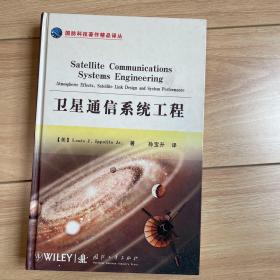

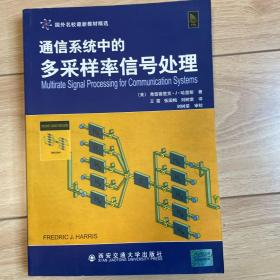

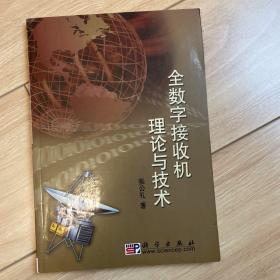
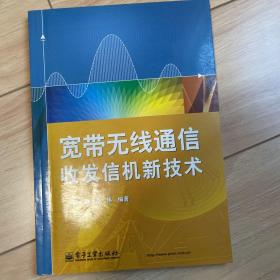
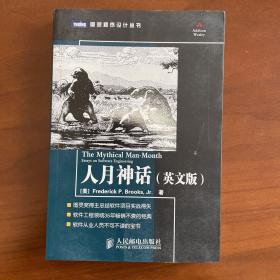
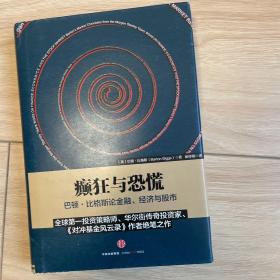












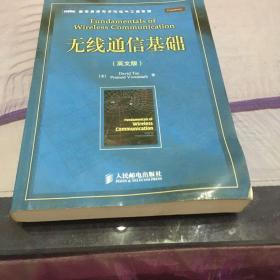




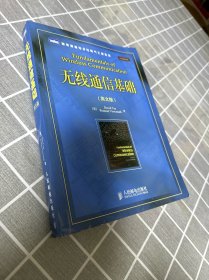

以下为对购买帮助不大的评价